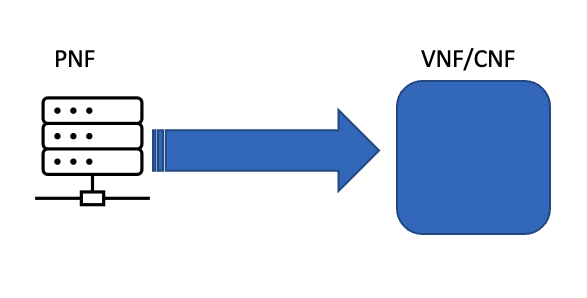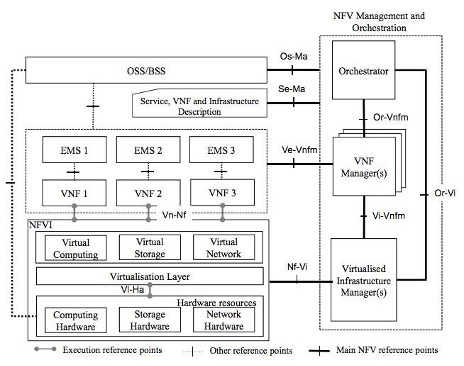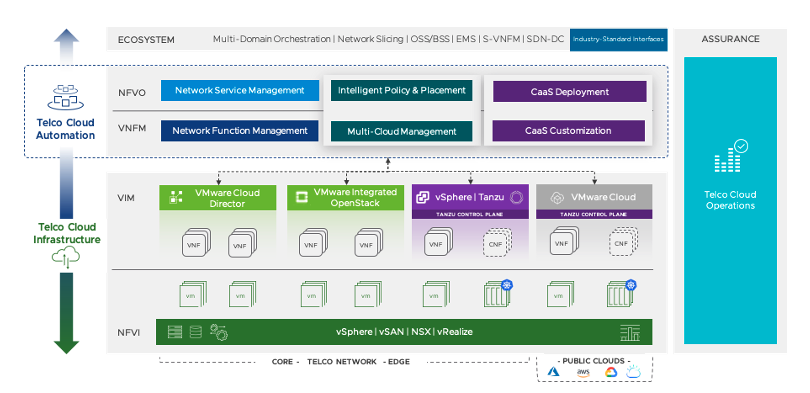Network Function Virtualization: The key to supporting 5G
If the fast forward button on your DVR is broken, or if you just enjoy watching commercials, you have undoubtedly heard a ton about 5G and the cloud recently. These technologies offer great promise for consumers, as the commercials are quick to let you know, but these technologies also offer great promise for the telecommunications companies themselves.
5G offers faster speeds, lower latency and support for a variety of IoT devices. 5G’s compelling features allow telcos to offer new services to their customers that were not previously possible. However, to support these new services, telcos need to deploy edge network elements quickly and cost-effectively (e.g., RANs). Traditional hardware-based proprietary networks cannot be deployed fast enough nor inexpensively enough to support consumer demand for these new services. Telcos need a more efficient network deployment method.
To achieve the scale needed for today’s networks, telcos should move from hardware-based architectures to software-based virtualized networks. To make the shift, communication service providers (CSPs) are decoupling the control plane and data plane from physical devices and are rolling out key network functionality in software. Software can be deployed on virtual machines and is less expensive and easier to deploy at scale than hardware-based solutions. This process of moving from a predominately hardware-based network to a primarily software-based one is called network function virtualization (NFV). With this transition, the functionality of a network can be deployed in a virtual machine (VM) to make it a virtual network function (VNF) or in a container to make it a cloud-native network function (CNF).

To support the evolution of the NFV the European Telecommunications Standards Institute (ETSI) has implemented a new standard architecture as shown below.

Telco NFV challenges
NFV has many benefits for CSPs, but it is not without its challenges. Telcos need to migrate from siloed networks to cloud-based networks. For this move to happen, the new cloud-based networks must meet the following requirements:
- Support transport and routing protocols used by telco virtual routers
- Allow tenant-based network isolation
- Provide end-to-end connectivity between virtual networks and physical networks
- Offer high speed, low latency and low jitter
In addition to supporting the above requirements for the new implementations, telcos must continue to support their legacy RAN infrastructure. This can be challenging due to vendor locking, dedicated hardware, lack of flexibility for varying frequency needs, bandwidth requirements and latency demands. Deploying new cloud-based networks while supporting legacy infrastructure takes careful planning and requires a high level of technical expertise.
This transition is made even more challenging by the large number of total devices that must be deployed and managed by the telco. Telco infrastructures are spread across multiple sites with a huge number of VNFs and CNFs. For example, a tier-1 provider can have hundreds of distributed units (DU) running an infrastructure with hundreds of thousands of servers at the edge. This large number of devices can make administration and life cycle management difficult.
While several hurdles need to be addressed to move to a virtualized infrastructure, the payoff in doing so for telcos is huge. Fortunately, the proper equipment, well-planned automation, and the proper technical expertise can greatly simplify the transition.
Moving to cloud-ready
To enable cloud-ready networks for telcos, VMware has put extensive time and resources into creating a more efficient deployment model. VMware approaches the network with a different reference architecture than traditional telcos.
Comparing the ETSI NFV architecture with VMware architecture:

The VMware architecture is called the Telco Cloud Platform and consists of the Telco Cloud Infrastructure, Telco Cloud Automation and Telco Cloud Operations. The Telco Cloud Platform delivers a consistent infrastructure and multi-layer automation. Here are the highlights of each Telco Cloud Platform component.

Telco Cloud Infrastructure
The VMware Telco Cloud Infrastructure is a modular platform that allows easy deployment of cloud computing stacks. The ETSI-compliant platform supports a broad range of VNFs so CSPs can rapidly deploy new equipment quickly and at scale. The platform’s consistent architecture enables CSPs to deploy various network functions and services at the core and edge.
VMware Telco Cloud is based on VMware’s NFV infrastructure of vSphere, vSAN, NSX and vRealize as the foundation. Telcos have the flexibility to choose their VIM with VMware Cloud Directory, VMware Integrated Openstack or a CaaS infrastructure layer with VMware Tanzu.
Telco Cloud Automation
One of the key benefits of the VMware Telco Cloud Platform is the ability to enable automation for product rollouts. Automation is especially important for 5G networks since they require many RANs. This is where VMware Telco Cloud Automation (TCA) enters the picture. TCA helps CSPs automate the VNF and CNF deployment on multiple domains with the required customization to the infrastructure and the NFs. TCA enables quick deployment of network functions and services while providing operational agility. VMware Telco Cloud Automation enables multi‑cloud placement and mobility from the network core to edge, and from private to public clouds.
Telco Cloud Operations
VMware Telco Cloud Operations (TCO) offers assurance of the service offering from end-to-end. It is designed to simplify network operations through holistic monitoring and performance management. Also, it provides comprehensive visibility to operators. TCO spans multiple layers of the network, correlating the virtual services with the underlying infrastructure. Automatic topology discovery, cross-tier visualization and relationship mapping give TCO the ability to rapidly identify the true cause of issues and see the affected services. TCO employs machine learning to detect performance changes and to quickly notify operators for immediate remediation.
Embark on NVF today
Telcos require a software-based open architecture to scale for 5G. This design allows telcos to use off-the-shelf components to ease installation. The software design allows for easy automation to minimize setup and configuration time. Additionally, advanced monitoring and AI greatly reduce operation costs.
To learn more about how companies like Vodafone and NTT DOCOMO are making their network ready for the future, visit the VMware website.






